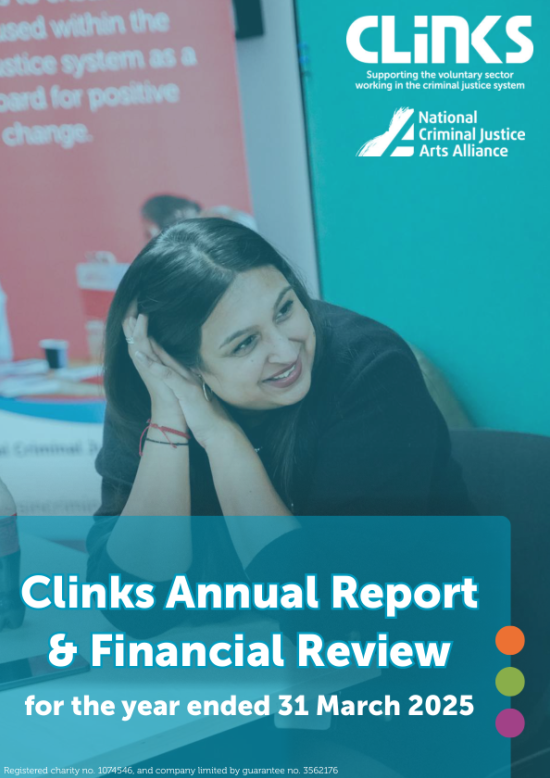The Justice Committee has published its report on adult custodial remand. The Committee launched an inquiry into the topic seeking to understand why the number of people on remand has increased since Covid, whether remand to custody is fit for purpose and being appropriately applied, and what effect custodial remand has on the prison population. Clinks submitted our evidence to the inquiry in April 2022.
Data: what is the full picture of people on remand?
The number of people being held in prison on remand while awaiting trial is at the highest level it has been for 50 years. In our evidence, Clinks recommended that the Ministry of Justice (MoJ) publish a comprehensive needs assessment of people in prison, including but not limited to, those on remand.
In its report, the Committee reflects Clinks’ concerns that little is known about people on remand and calls for more data to be collected and published on remanded defendants, particularly around reasons for refusing bail, the amount of time people spend on remand, and demographic information, including vulnerabilities and protected characteristics. It recommends the MoJ publish data on the remand population in a detailed quarterly publication, as it does of the Offender Management statistics.
Support for people on remand, in prison and after release
We told the inquiry that access to both statutory and voluntary services in prison are usually driven by a release date, which neither untried nor unsentenced prisoners have. This means remand prisoners may be included as a matter of policy but are largely excluded in practice. On release, there is no support for prisoners who are not convicted. Those who are convicted may be able to access support depending on the type and length of sentence handed down.
Clinks stressed that services for people on remand must be supported by funding, otherwise those services will be spread too thin.
The Justice Committee shares our concerns, reporting that people on remand do not automatically receive the same level of support as people who are sentenced, despite facing similar challenges, either in prison or on release. The Committee noted its disappointment that resettlement support is not routinely available to people on remand, and it is concerning this support is not being provided for contractual reasons.
It calls for the government to find a way to ensure people who are acquitted are supported to return to the community in a way that is at least equivalent to those who are released having served a custodial sentence. As a minimum, the Committee said people should receive help in finding temporary accommodation and be entitled to the same discharge grant as those who receive a sentence.
The voluntary sector is a major source of support for people on remand
It is often the case that services are in place for sentenced populations, but not for those remanded in custody because the terms of contracts only refer to the sentenced prison population. Clinks recommended that HM Prison and Probation Service (HMPPS) and the MoJ consider how the commissioning of services directed towards the policy priority of reducing reoffending might unintentionally preclude support for those on remand.
The Committee has paid attention to evidence submitted by Clinks, outlining that in many cases, even if not specifically funded to work with unsentenced populations, voluntary sector organisations do their best to provide services to people on remand. The report quoted our 2021 State of the sector survey - an annual survey of voluntary organisations working with people in the criminal justice system - in which; of the 132 organisations that responded, 44% said they work with people on remand.
Women on remand
The size and geography of the women’s estate means women are held further from home, creating difficulties in maintaining contact with their families and within the remit of local services. This remains a significant issue for Welsh women who are remanded in England. Women are more likely to be remanded for less serious offences and are more likely to be primary or sole carers for children.
The Justice Committee’s report includes a focus on women and its recommendations include calls for an update on the Female Offender Strategy with regards to remand, and better provision to enable women to await trial in the community.
Racially minoritised people on remand
There is little in the Justice Committee report about disproportionality or the different circumstances of racially minoritised people on remand, in part because the MoJ do not publish data about people in remand in one place. “There is no single publication by the Ministry of Justice that provides data on the remand population. Rather, the data that is available on this population is spread across different Ministry of Justice datasets.”
In our evidence, Clinks invited the Committee to consider disparities in the use of remand for racially minoritised people. We recommended that the MoJ consider how the learning from reviews on disproportionality and the use of custodial remand in the children and young people’s estate can be incorporated into work to address these issues for the adult population.
The same week that the Justice Committee report was published, Action for Race Equality released research that gave a picture of racial inequality in sentencing. The research shows that racially minoritised people are more likely to be imprisoned or remanded in custody; the likelihood of remand is 60% higher for defendants in the Chinese group, 37% higher for those in the Other White group, between 22% and 26% higher for defendants in the Mixed group and between 15% and 18% higher for defendants in the Black group compared to the White British group.
The way forward
The Justice Committee reports that the criminal justice system is not equipped to deal with the rising number of people remanded in prison. It makes a number of recommendations that would improve the situation.
The report calls for the creation of guidelines for bail conditions to ensure consistency and monitor compliance to increase judiciary confidence. It calls for an independent review into the application of the Bail Act 1976, the legislation which governs the use of custodial remand. It also calls for greater use of community alternatives to custodial remand, improved support for those on remand, and better support available on release including the same discharge grant that people who have received a sentence receive when leaving prison. It highlights that greater use of video technology could help people on remand maintain family contact.
We were pleased to see that the Committee agreed with Clinks’ recommendation that the needs of people on remand must be considered, including support available for people who are acquitted and the regular publication of statistics on the remand population among its own recommendations.
We would go further and suggest that HMPPS ensure that services are not only available to people on remand but are specifically funded for unsentenced people.
What's new
Blogs
Anne Fox CEO of Clinks to stand down after a decade of service
Latest on X
The role is for a leader from an organisation focused on racially minoritised people, with expertise in service delivery, policy, advocacy, or related areas in criminal justice. Racial disparities are present at every CJS stage. This role ensures these voices are central in shaping policy to help address and eradicate them. Apply by Mon 18 Nov, 10am. More info: https://www.clinks.org/voluntary-community-sector/vacancies/15566 #CriminalJustice #RR3 #RacialEquity

